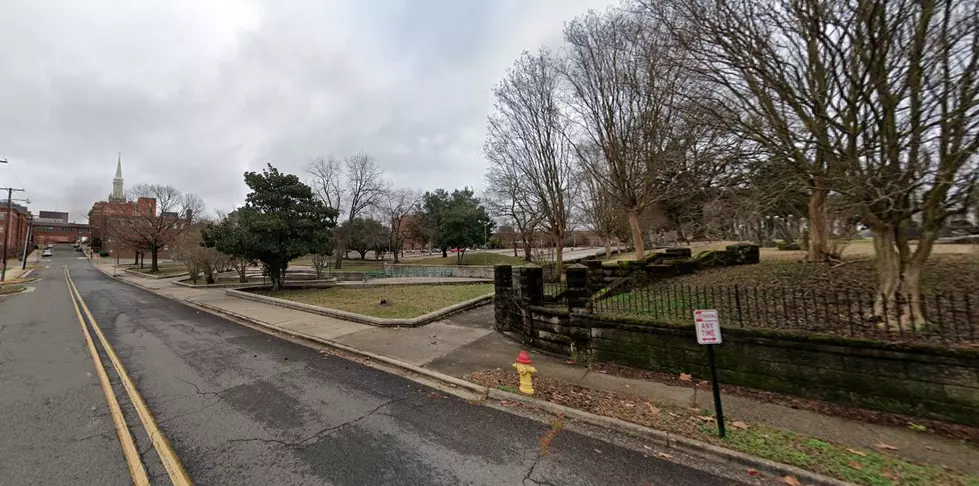
Do You Know the History Behind Shreveport’s Seediest Street?

This street located just outside of downtown Shreveport, LA was once the home of one of Shreveport's most colorful areas and was important to the Civil Rights Movement.
Have you ever heard of Sprague Street just outside of downtown Shreveport?
When I was a kid growing up in Shreveport-Bossier, you'd hear folks whisper about Sprague Street. They'd warn you about getting caught on the notorious street late at night and you'd also hear about people leaving the bars drunk in downtown Shreveport and ending up driving the wrong way down Sprague since it used to be a one-way street. However, the point is, if you were on Sprague Street and you weren't lost, the assumption was that you were up to no good. It was reputedly a den of prostitution and all kinds of activities of ill repute.
And those rumors weren't far off. Back in the day, Sprague Street was a hot spot, with women whistling from porches at passers-by trying to drum up 'business.' Sprague Street was known as Shreveport's very own 'red light district' in an area called St. Paul's Bottoms. However, in 1917, the Shreveport City Council outlawed prostitution for the entire city making being caught in that part of town even more undesirable for some.
There's a reason why we call Sprague Street seedy now. It's run down in places and some would consider it an eyesore. Research shows that the building materials for the street itself and the bond for its upkeep weren't nearly as high or as good of quality as for neighboring streets like Market Street and Fairfield Avenue. Why? Well, we'll never know for sure, but it doesn't take a rocket scientist to figure out it has something to do with race. While big business was happening on Sprague, it wasn't where many Shreveport residents wanted to be seen.
When researching this piece, the part that caught my attention was how colorful the homes were along Sprague. It makes me of the colorful row houses you can still find today in the Faubourg Marigny neighborhood of New Orleans. I love the rich and diverse history of New Orleans and we should celebrate that same history here in our area.
By the 1960s, Sprague Street was the home of two of the only hotels in Shreveport that weren't segregated. The Castle Hotel was one of the only black-owned hotels in the city and because it was located on Sprague Street and close to the Municipal Auditorium, it was a popular place for black entertainers to stay. Speaking of hotels and race in Shreveport, legend has it that singer Sam Cooke wrote his famous song, A Change is Gonna Come, about his attempted stay and subsequent arrest at the Holiday Inn in downtown Shreveport. That song would later become one of the anthems of the Civil Rights Movement.
Read More: See The History and Where to Find Shreveport-Style Stuffed Shrimp
Obviously, we're glossing over a lot of what happened over the years on Sprague Street because it would take a book to tell the entire story, but for overview purposes, Sprague Street played an important part in the Civil Rights Movement right here in Shreveport and was where many activists and entertainers stayed when they were in town. That's what makes businesses like the Castle and Sprague Street Hotels so important in the area of Shreveport that is now known as Ledbetter Heights, named for blues singer Huddie Ledbetter. Other notable dignitaries who stayed on Sprague Street include Reverend Martin Luther King Jr., Reverend Ralph Abernathy, and Dr. Joseph Lowery.
Fast forward to today, and you can see a historical market at the corner of Sprague and Christian Streets stating, 'Group of six Victorian cottages built circa 1890. Possibly remodellings of circa 1870 houses known to have stood on same site. Listed in National Register of Historic Places, 1983.'
Now, a portion of Sprague Street is home to Shreveport Green, an urban farm dedicated to alleviating food insecurity. Ironically, there was a community garden in the same area back in 1914. Not a bad use for an area dedicated to growth and change.
25 Ways to Say You're From Shreveport Without Saying You're From Shreveport
The Top 10 Things That Shreveport Doesn't Need Any More Of!
The 5 Best Things to Do in Shreveport-Bossier City
5 of Louisiana's Oldest Restaurants Make Their Home in Shreveport
Gallery Credit: Google Maps/Google Streetview

